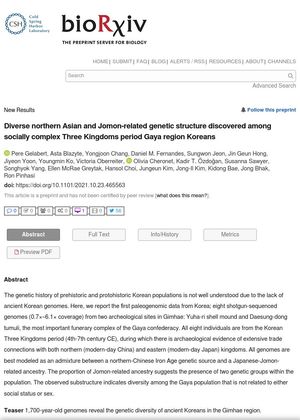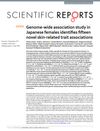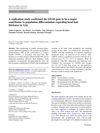Diverse Northern Asian and Jomon-Related Genetic Structure Discovered Among Socially Complex Three Kingdoms Period Gaya Region Koreans
October 2021
in “
bioRxiv (Cold Spring Harbor Laboratory)
”

TLDR The DNA of ancient Koreans from the Three Kingdoms period shows a mix of northern Chinese and Japanese-Jomon ancestry, revealing two distinct genetic groups.
The study presents the first paleogenomic data from Korea, specifically from eight individuals from the Korean Three Kingdoms period (4th-7th century CE) found in two archeological sites in Gimhae. The genomes of these individuals are best modeled as a mix between a northern-Chinese Iron Age genetic source and a Japanese-Jomon-related ancestry. The proportion of Jomon-related ancestry suggests the existence of two genetic groups within the population. The study found diversity among the Gaya population that is not related to either social status or sex.


